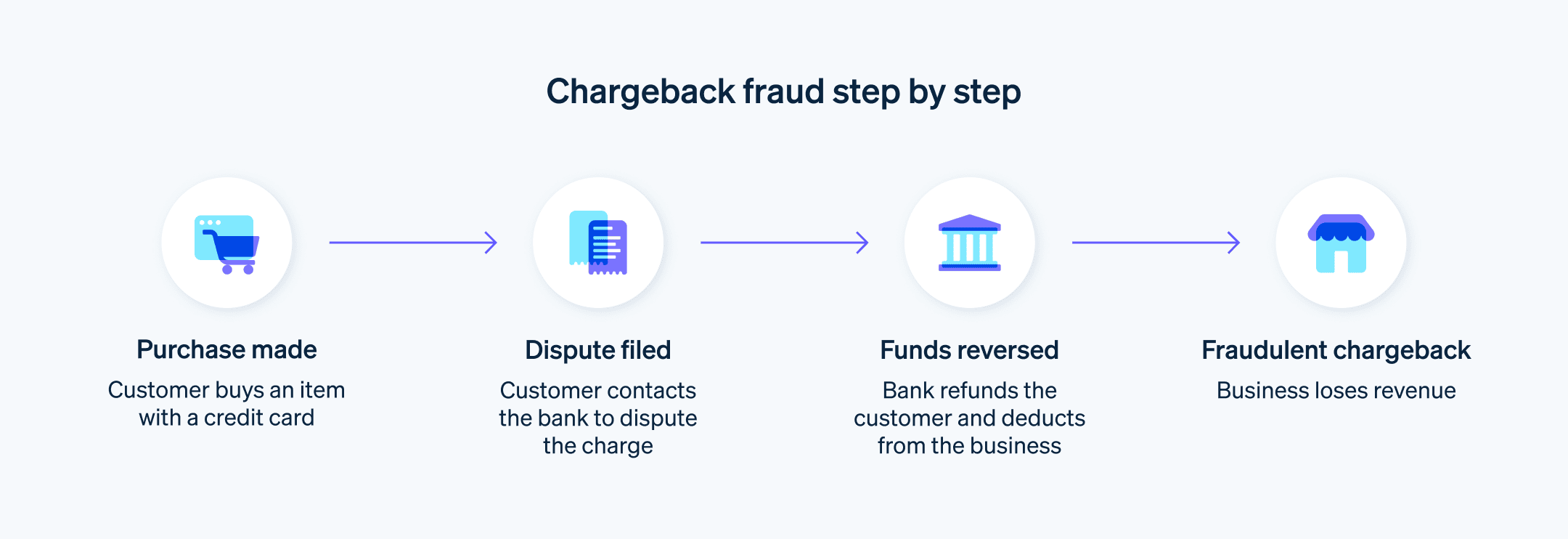撤单欺诈是一个日益严重的问题,影响着各类企业。根据 Juniper Research 的一份报告,2021 年撤单欺诈使企业损失了估计 200 亿美元。撤单可能出于多种原因,包括企业的错误或客户对产品或服务的不满。
然而,客户有时会利用撤单来避免退货和索取退款,而欺诈行为者则利用撤单来从企业中窃取资金。在这两种情况下,撤单的负面影响都可能对企业的财务健康和声誉造成严重伤害。
检测、预防和应对撤单欺诈的第一步是了解什么是撤单欺诈,它是如何运作的,以及哪些企业最容易受到影响。以下是企业需要了解的关于撤单欺诈的简要概述,包括可以采取的措施以降低风险,以及如何应对发生的欺诈性撤单。
目录
- 什么是撤单?
- 什么是撤单欺诈?
- 哪些类型的企业受到撤单欺诈的影响?
- 如何预防撤单欺诈
- 撤单欺诈对企业的伤害
- Stripe 能提供什么帮助
什么是撤单?
撤单是指当客户与其银行或信用卡公司对账单中的费用发生争议时,所进行的一种交易撤回。撤单可能由于多种原因发生,例如欺诈、对产品或服务的不满,或企业的错误。当发生撤单时,客户的银行或信用卡公司会将争议金额退还给客户,并从企业的账户中扣除该金额。
对于企业而言,撤单可能导致财务损失、声誉受损、支付处理费用增加,甚至失去接受信用卡支付的能力。更糟糕的是,欺诈行为者有时会将撤单作为从企业窃取资金的工具。
什么是撤单欺诈?
撤单欺诈发生在客户故意对扣款提出争议以获得退款,同时保留产品或服务。客户可能声称未收到产品、产品有缺陷,或交易未经授权。撤单欺诈有几种类型,包括:
善意欺诈
善意欺诈发生在持卡人进行合法购买后,声称未授权扣款或所购商品或服务与描述不符,从而对扣款提出争议。这种情况有时发生在持卡人忘记自己付款的情况下,或在账单上未识别出该笔扣款,并认为这是欺诈。在一些善意欺诈的情况下,持卡人甚至可能收到商品后再提出撤单,声称他们从未收到过商品。退货欺诈
退货欺诈发生在个人将商品退还给零售商时,声称产品有故障、缺陷或不令人满意——尽管该产品状况良好或被篡改(或使用过)。这通常伴随有撤单请求,尤其是当零售商的退货政策不明确时。数字商品撤单
数字商品欺诈发生在客户在访问和使用数字产品(例如软件许可证或在线课程)后,对扣款提出争议。这对于企业来说可能很难预防,因为客户可能已经下载了该产品,但企业无法确定这一点。订阅欺诈
订阅欺诈发生在客户对订阅服务(例如流媒体服务)的定期扣款提出争议,尽管他们已经享受了几个月的服务。客户可能声称他们未授权定期扣款,或他们已取消订阅但仍被扣款。

哪些类型的企业受到撤单欺诈的影响?
撤单欺诈可能影响任何接受信用卡支付的企业,无论其规模或行业。然而,一些企业特别容易受到撤单欺诈的影响:
销售高价值产品或服务的企业,例如奢侈品或旅行住宿,面临更高的撤单欺诈风险,因为欺诈行为者可能会借此机会通过提交虚假的撤单请求免费获取产品或服务。
在线零售商和服务提供商的撤单欺诈风险较高。线上交易比线下交易更难以验证,这使得欺诈行为者更容易对扣款提出争议并获得退款。数字产品(如软件或在线课程)尤其容易受到撤单欺诈的影响,因为客户可以轻易声称他们未收到产品或对其不满意。
基于订阅的企业,如流媒体服务或订阅盒子,也面临更高的撤单欺诈风险。客户可能忘记他们注册了该服务,或在信用卡账单上未识别定期扣款,从而导致他们对扣款提出争议并申请撤单。或者,客户可能声称他们未授权一个实际上他们已在使用的订阅。
虽然这些行业特别高风险,但任何处理信用卡交易的企业都面临撤单欺诈的风险。因此,各种规模和类型的企业都需要意识到撤单欺诈,并采取积极措施保护自己。这包括实施防欺诈工具、提供卓越的客户服务以及有效管理撤单。
如何预防撤单欺诈
撤单欺诈的策略多种多样,但企业可以采取多种措施来保护自己。以下是企业可以采取的防止和应对撤单欺诈的措施:
改善客户服务
改善客户服务可以减少因对产品或服务不满而引发的撤单的可能性。通过提供优质的客户服务,并使客户在有问题或疑问时尽可能容易地联系到企业,企业可以解决客户的关切,并更有效地防止客户发起撤单。提供明确的退货和退款政策
许多撤单发生是因为客户发现发起撤单比了解企业的退货或换货政策更容易。减少欺诈性撤单的一种方法是简化退货政策,使客户发起撤单的难度与退货相当。创建详细且便于顾客理解的退货和退款政策,并向客户明确传达这些政策,可以通过确保客户理解退货和退款流程来防止退货欺诈。使用强大的防欺诈工具
强大的防欺诈工具,例如 Stripe Radar,可以在产生撤单之前检测和防止欺诈交易。Radar 使用机器学习算法分析交易数据并标记可疑活动。有效管理撤单
有效的撤单管理可以帮助企业对抗欺诈性撤单并恢复损失的收入。企业应跟踪撤单数据,分析撤单原因,并对那些欺诈性或不合理的撤单进行争议。
欲深入了解企业如何防止撤单,请查看我们的指南。
撤单欺诈对企业的伤害
撤单欺诈对各种规模的企业都有显著的负面影响。对于往往运营于较紧凑利润空间的小型和中型企业来说,撤单带来的财务损失可能更为严重。对于大型企业而言,单个撤单可能不会造成太大损害,但在更大规模上发生撤单欺诈的可能性更高,这可能迅速累积。以下是撤单欺诈可能影响企业的一些方式:
财务损失
与其他类型的欺诈一样,撤单欺诈可能导致企业遭受重大财务损失。除了因欺诈交易损失收入外,企业还可能需要支付撤单费用和其他相关成本。如果撤单变得过于频繁或严重,它们可能导致企业破产。声誉受损
频繁的撤单可能导致负面评价和社交媒体评论,损害企业的形象和信誉。如果品牌与欺诈有关,客户可能会将该企业视为不可靠或有风险,从而导致客户忠诚度下降和未来销售损失。运营成本
处理撤单可能耗时且昂贵。企业可能需要花费大量时间和资源调查撤单、提供证据和对抗欺诈索赔,这可能会分散用于扩大客户群、开发和推出新产品或服务及集中精力于客户保留的资源。企业花在应对撤单上的任何时间,都是没有花在培育业务上的时间。欺诈预防成本增加
为了防止撤单欺诈,企业可能需要投资额外的防欺诈措施,例如欺诈检测软件、安全系统和员工培训。这些额外成本可能迅速累积并影响企业的利润。高撤单比例
如果企业的撤单比例较高(撤单数量与销售数量的比率),可能会导致支付处理商或信用卡发行方的处罚。高撤单比例也可能导致更高的处理费用或失去商户账户。
Stripe 能提供什么帮助
Stripe 为各类企业提供一系列商业解决方案,包括复杂和积极的防欺诈及欺诈检测措施——包括针对撤单欺诈的保护。以下是 Stripe 如何帮助客户应对撤单和其他与商业相关的欺诈的一些方式:
自动化撤单回应
Stripe 提供自动化撤单回应,这可以帮助企业快速高效地应对撤单。当企业收到撤单时,Stripe 可以根据预定义的规则和证据自动生成回应,从而节省企业的时间和精力。撤单管理工具
Stripe 提供撤单管理工具,帮助企业有效管理已发生的撤单。这些工具为企业提供有关撤单的详细信息,包括撤单的原因和争议所需的证据。这可以帮助企业在是否争议撤单或退款时做出明智的决策。简便的争议证据提交
Stripe 为企业提供简单且高效的证据提交流程,以对抗撤单。企业可以直接将证据上传到其管理平台,包括收据、运输信息和客户沟通记录。这可以帮助企业争议欺诈性撤单并恢复损失的收入。
Stripe 的撤单保护是广泛欺诈检测工具套件的一部分,与 Stripe Radar 结合使用,可以帮助企业识别和防止欺诈交易,避免导致撤单。这些工具使用机器学习算法分析交易数据,识别可能表明欺诈的模式。通过与 Stripe 合作检测和防止欺诈交易,企业可以降低撤单欺诈的风险。
本文中的内容仅供一般信息和教育目的,不应被解释为法律或税务建议。Stripe 不保证或担保文章中信息的准确性、完整性、充分性或时效性。您应该寻求在您的司法管辖区获得执业许可的合格律师或会计师的建议,以就您的特定情况提供建议。
